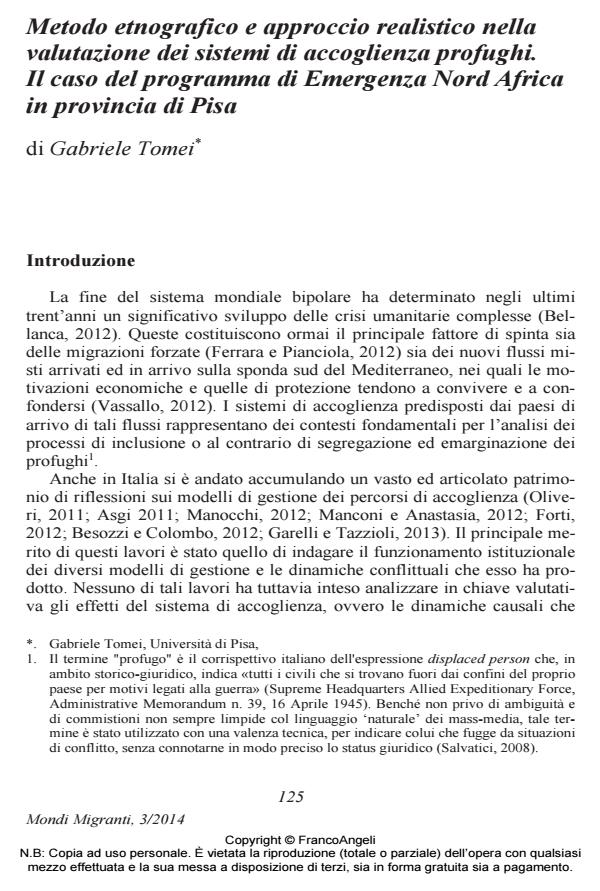The ethnographic and the realistic approach in evaluation of outcomes in asylum- seekers. The implementation of the Emergency North Africa programme in the province of Pisa
Journal title MONDI MIGRANTI
Author/s Gabriele Tomei
Publishing Year 2015 Issue 2014/3
Language Italian Pages 17 P. 125-141 File size 77 KB
DOI 10.3280/MM2014-003008
DOI is like a bar code for intellectual property: to have more infomation
click here
Below, you can see the article first page
If you want to buy this article in PDF format, you can do it, following the instructions to buy download credits

FrancoAngeli is member of Publishers International Linking Association, Inc (PILA), a not-for-profit association which run the CrossRef service enabling links to and from online scholarly content.
In the last period, an impressive amount of qualitative and quantitative analysis of the asylum-seeker Italian management systems emerged. The article discusses the methodology and the results of a qualitative evaluation research that recently focused on the implementation of the Ena programme in the province of Pisa looking for the changes the programme itself stimulated in some specific target- beneficiaries (asylum-seekers assisted by the programme, holders of temporary- protection permission not assisted by the programme). This analysis underlines the importance of joining the ethnographic with the realistic approach, using the latter as a meta-theoretical lens in order to help evaluators in organizing the empirical evidences under a coherent interpretative model. Realistic evaluation, in fact, help analysis in understanding the social mechanisms that emerge into the different institutional and organizational contexts of the programme and how their combinations contributed to various outcomes in asylum-seekers’ lives and into local welfare systems.
Keywords: Realistic evaluation; asysum-seeker management system; Italy; Ena programme.
Gabriele Tomei, Metodo etnografico e approccio realistico nella valutazione dei sistemi di accoglienza profughi. Il caso del programma di Emergenza Nord Africa in provincia di Pisa in "MONDI MIGRANTI" 3/2014, pp 125-141, DOI: 10.3280/MM2014-003008